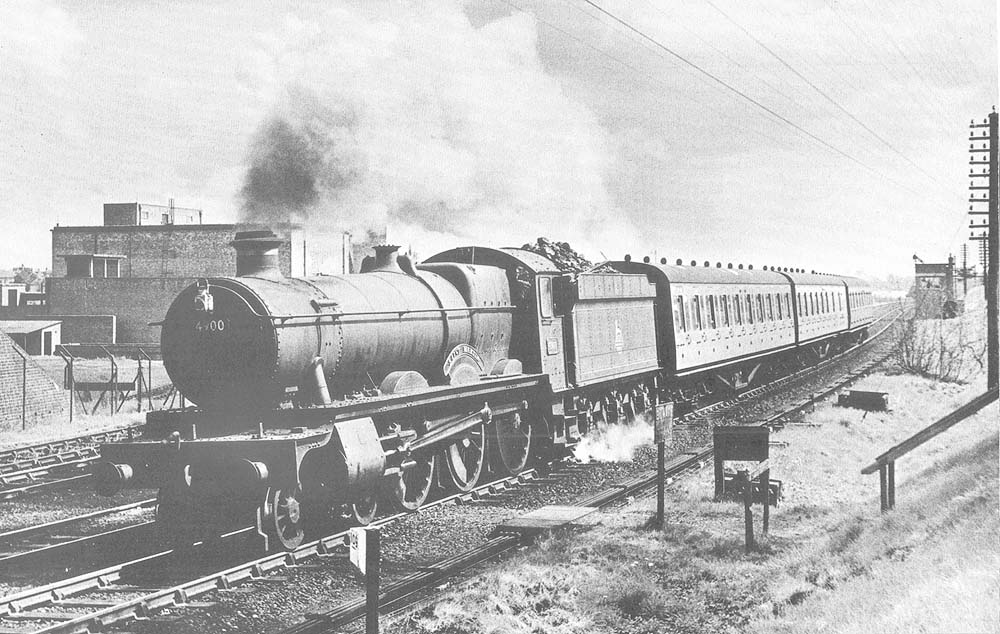 |
|
GWR Route: Banbury to Wolverhampton
Budbrook and Warwick Cold Store: gwrw2184
 |
Ex-Great Western Railway 49xx (Hall) class No 4900
‘Saint Martin’ passes the Warwick Cold Store on the down main line
with a local passenger service from Leamington to Worcester via
Stratford-on-Avon on Saturday 30th April 1955. On the right is Warwick North
Signal Box, which was opened in June 1942 at the same time as the exchange loop
sidings for the Cold Store. Warwick North Signal Box was a Great Western
Railway type 13 Signal Box which was an austere wartime design built for
strength and speed of construction. Forty-three of this Signal Box type were
built during the Second World War and they were also termed GW ARP boxes as
although similar to an early 1930s design, these were based on the Railway
Executive Committee's requirements with 14 inch thick brick walls and a flat
reinforced concrete roof. They had prominent concrete lintels over the windows,
a brick chimney at the rear and the Great Western Railway’s characteristic
three panes up / two panes down wooden framed windows arranged in pairs with a
horizontal sliding sash operation. Warwick North Signal Box was 24 foot, 2
inches long by 12 foot, 1 inch wide and the operating floor height above rail
level was eight feet. Inside the Signal Box was a vertical five bar tappet
locking frame with 25 levers at 4 inch centres.
The locomotive in the photograph was the first of the Hall
class. It was rebuilt as a prototype mixed traffic locomotive from the 29xx
(Saint) class express locomotive No 2925 ‘Saint Martin’ in December
1924. The main changes being the coupled wheel diameter, which were reduced to
six foot to give better low speed torque, realigned cylinders and a larger
side-window cab. After an extensive period of evaluation another eighty
locomotives were ordered in 1928 and as the first of these reached completion,
No 2925 was renumbered No 4900 on 7th December 1928. The 49xx class locomotives
had a tractive effort at 85% of 27,275 lb, which classified them in power group
D and their maximum axle weight was 18 tons, 9 cwt, which limited them to main
lines and a few branch lines (Route code - Red). For more details about the
Great Western Railway’s locomotive classification scheme see Engine Map. Despite the route
limitation, the design proved to be extremely successful and these mixed
traffic locomotives were found to be equally at home hauling heavy freight
trains or fast express services. A total of two hundred and fifty-nine 49xx
locomotives were built up to 1943, with all except one (which was irreparably
damaged in an air attack) entering British Railways service.
As built No 4900 retained the Saint class front end, but
this was modified in December 1948 when the locomotive was fitted with outside
steam pipes. The prototype locomotive was initially allocated to Laira shed
(LA) outside Plymouth, but was known to be allocated to Oxford shed (OXF) in
January 1934. In December 1947 prior to nationalisation No 4900 was allocated
to Old Oak Common shed (PDN) outside Paddington and was withdrawn from Old Oak
Common shed (81A) in April 1959.
Robert Ferris
Return to Warwick
station
Return to Budbrook and
Warwick Cold Store
 back back

|
